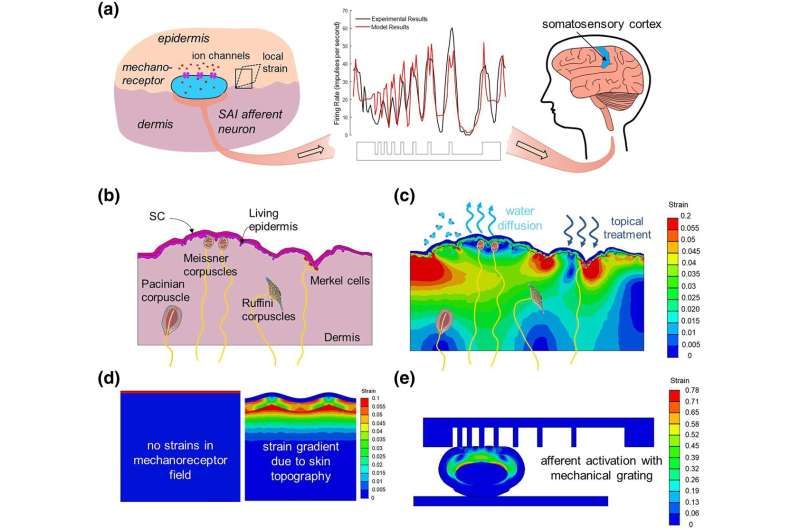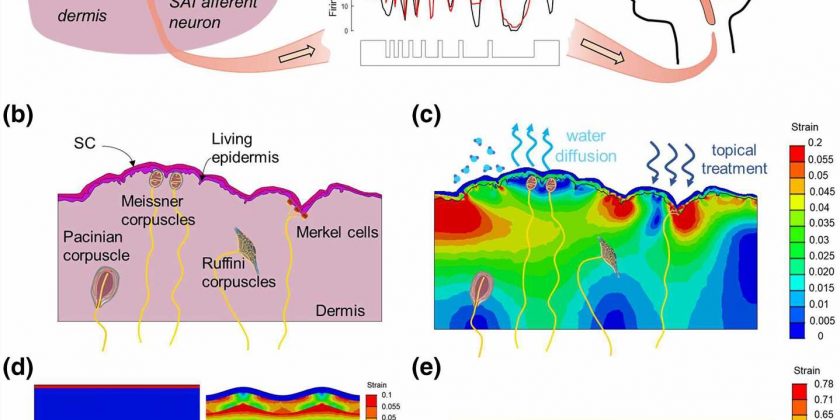
Some cleansers make the skin feel “tight” and some moisturizers make the skin feel “soft.” Reinhold H. Dauskardt and colleagues traced the mechanisms by which applying cleansers or moisturizers to the skin results in such sensations, using in-vitro biomechanical testing, computational neural stimulation modeling, and self-assessment surveys completed by thousands of participants.
The application of a topical treatment can alter the state of specific skin layers, activating cutaneous mechanoreceptors that then feed information forward to slowly adapting type I (SAI) neurons and then on to the central nervous system.
Changes that can initiate such neural cascades include drying cleansers that cause contraction of the outermost skin layer known as the stratum corneum—or swelling of that same layer upon the application of creams or lotions.
The authors found strong correlations between the physical stress that results in the stratum corneum during post-cleaning drying or moisturizing and the firing rate of neurons located much deeper in the skin near the dermal-epidermal junction.
Using their neural stimulation model, the predicted SAI neuron firing rates in full thickness skin correlated closely with the subjective reports of “tightness” in surveys of 2,000 women in France testing moisturizers and 720 women in China testing cleansers—in some cases up to 12 hours after application.
The work provides a quantitative framework for understanding the biomechanical neural activation mechanism behind the subjective experience of topical skin treatments, according to the authors.
The research was published in PNAS Nexus.
More information:
Ross Bennett-Kennett et al, Sensory neuron activation from topical treatments modulates the sensorial perception of human skin, PNAS Nexus, (2023) DOI: 10.1093/pnasnexus/pgad292. academic.oup.com/pnasnexus/art … /2/9/pgad292/7278834
Journal information:
PNAS Nexus
Source: Read Full Article
